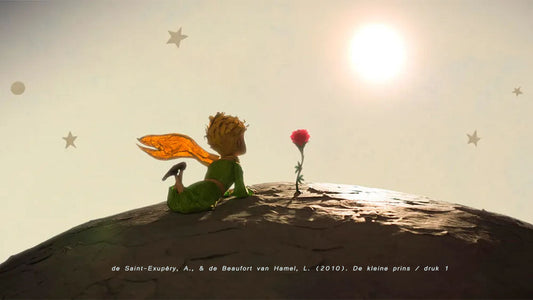About freedom, layers and the creator's signature
The art world is buzzing. AI (artificial intelligence) has rapidly infiltrated our domain. Where once brushstrokes and ink blots reigned supreme, algorithms and prompts now appear. Some artists are completely captivated. Other creators frown and cry, "This isn't real art."
And me? I'm right in the thick of it. Fascinated. Sometimes confused, too. Because I love the smell of paint, dirty fingers, the feeling of building something from scratch. But at the same time, I see the power of AI. It opens doors that might otherwise remain closed.
The promise of AI
AI is fast. It gives me something in minutes that would otherwise take weeks. It's a never-ending sketchbook. A playground of images, colors, and textures.
I can experiment without fear of waste. I can make my visions tangible, even if I don't have a whole day to paint. For someone bursting with ideas but also constrained by time, that's a gift.
Victor Hugo once said: “Nothing is stronger than an idea whose time has come.”
Perhaps the same applies to AI in art. We can no longer imagine life without it.
The dark side
But I understand the resistance. Where is the authenticity? Where is the craftsmanship?
AI "borrows" from vast databases of existing images. Many artists feel like their work is being ripped from without permission. As if their souls are being squeezed dry by a machine. And honestly? Sometimes I feel that way too.
How much of myself is left in an image I create with AI? Am I still the creator, or more of a curator, composer, director?
Picasso once said, "Good artists copy, great artists steal." A statement that has sparked debate for decades. What does "stealing" mean in art? Inspiration? Appropriation? Or innovation? The same questions are being asked now, but about AI.
The tension
Analogue work is slow. Intense. Every mistake is visible, but that mistake can also be worth its weight in gold. It's that human touch you feel.
Digital work, with or without AI, can look perfect. Smooth. Fast. Sometimes too fast.
I find myself struggling: what's more valuable? The unique, imperfect hand? Or the power of experimentation, the endless possibilities of digital?
Maybe that's the wrong question.
Maybe we should think of it as two languages existing side by side. Sometimes I speak one, sometimes the other. Sometimes they merge into something I could never have created otherwise.
My position
I'm not a purist. Nor am I a preacher of one truth.
I work with both analog and digital media. Sometimes separately, sometimes intertwined. I love blending worlds, seeking contrasts, and weaving together old forms and new techniques.
I don't use AI to replace, but to enrich. I often use it as a base layer, a starting point, a sketch, a foundation. But that's just the beginning. My work always grows in layers: filling, shifting, adding, erasing, reexamining, refining. Each image acquires many more layers before the final result is achieved. That takes time, choices, and patience.
And that end result? It must always bear my signature. I want people to immediately feel: "This is a Belinda." That goes beyond technique. It's in the choices I make, the colors I love, the contrasts I seek, the stories I want to tell.
So I'm not a conduit for a machine. I'm the director, the builder, the one who decides which layer stays and which disappears.
But still, sometimes I feel the gaze of others. The whispering question: "Is this really real?"
And yes, that can gnaw.
But you know what? I don't want to constantly have to justify myself. I don't want to waste my energy on endless discussions about what should and shouldn't be considered art. I want to create. Period.
The conversation
What affects me most isn't even the technology itself. It's the debate surrounding it. The divisions. The judgments.
Art has always been in flux. Every new technique, from early photography to digital printing, has met with resistance at some point. The Impressionists were ridiculed: too messy, too fast, lacking in craftsmanship. Now they hang in the world's greatest museums.
The French painter Paul Delaroche exclaimed upon the invention of photography: “From today, painting is dead.”
He was wrong. Painting still flourishes, but photography has permanently changed the art world. Perhaps AI is just the latest storm.
The question is: do we kill the storm, or do we learn to dance in it?
Freedom as a compass
For me, art is about freedom. The freedom to follow your own path, develop your own visual language, and make your own choices.
Whether you do that with charcoal, paint, camera, or code, it doesn't matter to me. What matters is that there's a human behind it who chooses, feels, and weighs the options.
For me, that's the difference between an image and art: the intention. The layer behind it. The story you, as the creator, bring to the table. AI can do a lot, but that human layer, that soul, remains something only we can add.
My choice
So yes, I use AI.
And yes, I also use brushes, ink and paper.
Sometimes apart, sometimes together.
I don't let myself be held hostage by other people's fears. And I refuse to constantly defend myself. For me, art is a game, a quest, a freedom.
As Leonardo da Vinci said, “Art is never finished, only abandoned.”
Perhaps that's true now more than ever. We let things go, we seize new resources, we keep searching.
I believe that art is not black and white.
I believe that the value lies in the layers, in the searching, in continuing to ask questions.
And perhaps that is precisely our role as artists: not to have the answers, but to keep the questions sharp.
So let me ask you this question:
When does art feel real to you?



